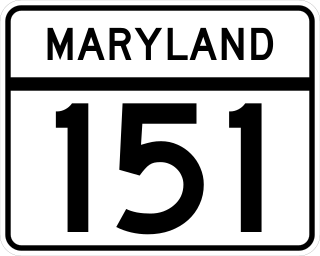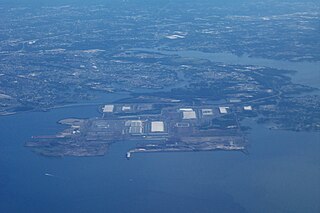
The Bethlehem Steel Corporation was an American steelmaking company headquartered in Bethlehem, Pennsylvania. Until its closure in 2003, it was one of the world's largest steel-producing and shipbuilding companies. At the height of its success and productivity, the company was a symbol of American manufacturing leadership in the world, and its decline and ultimate liquidation in the late 20th century is similarly cited as an example of America's diminished manufacturing leadership. From its founding in 1857 through its 2003 dissolution, Bethlehem Steel's headquarters were based in Bethlehem, Pennsylvania, in the Lehigh Valley region of the United States. Its primary steel mill manufacturing facilities were first located in Bethlehem, Pennsylvania and later expanded to include a major research laboratory in Bethlehem, Pennsylvania, and plants in Sparrows Point, Maryland, Johnstown, Pennsylvania, Lackawanna, New York, and its final and largest site in Burns Harbor, Indiana.

Union Iron Works, located in San Francisco, California, on the southeast waterfront, was a central business within the large industrial zone of Potrero Point, for four decades at the end of the nineteenth and beginning of the twentieth centuries.

Bethlehem Steel Corporation Shipbuilding Division was created in 1905 when the Bethlehem Steel Corporation of Bethlehem, Pennsylvania, acquired the San Francisco-based shipyard Union Iron Works. In 1917 it was incorporated as Bethlehem Shipbuilding Corporation, Limited.

USS Nitro (AE–23), an ammunition ship in the U.S. Navy, was laid down by Bethlehem Steel Corporation's Sparrows Point Shipyard at Baltimore, Maryland, on 20 May 1957 and launched on 25 June 1958. It was sponsored by Mrs. Mary Elizabeth Bunting Pate, the wife of General Randolph M. Pate, and commissioned on 1 May 1959.

Maryland Route 151 (MD 151) is a state highway in the U.S. state of Maryland. Known for most of its length as North Point Boulevard, the state highway runs 10.80 miles (17.38 km) from 7th Street in Sparrows Point north to U.S. Route 1 (US 1) in Baltimore. MD 151 is a four- to six-lane divided highway that connects the communities of Edgemere and Dundalk on the Patapsco River Neck peninsula of southeastern Baltimore County with industrial areas in Sparrows Point and East Baltimore. MD 151 was originally constructed in the early 1920s from Sparrows Point to Edgemere. The highway was connected to Baltimore by the Baltimore County portion of MD 20, a number also assigned to the highway from Rock Hall to Chestertown in Kent County. During World War II, MD 151 was extended north through Dundalk on a new divided highway parallel to MD 20 and through East Baltimore on an expanded Erdman Avenue to connect the Bethlehem Steel complex at Sparrows Point with MD 150 and US 40. In the late 1960s and early 1970s, Interstate 695 (I-695) was constructed parallel to MD 151 between Edgemere and MD 157 in Dundalk.

Sparrows Point is an industrial area in unincorporated Baltimore County, Maryland, United States, adjacent to Edgemere. Named after Thomas Sparrow, landowner, it was the site of a very large industrial complex owned by Bethlehem Steel, known for steelmaking and shipbuilding. In its heyday in the mid-20th century, it was the largest steel mill in the world. The site of the former Bethlehem Sparrows Point Shipyard and steel mill is now renamed Tradepoint Atlantic in a revitalization program to clean up the environment and make it one of the largest ports on the East Coast of the United States. Today Sparrows Point is home to many distribution centers, fulfillment centers, training lots, storage lots, and the like, including those operated by Under Armour, Amazon, Home Depot, Volkswagen, and McCormick & Company.

The Emergency Shipbuilding Program was a United States government effort to quickly build simple cargo ships to carry troops and materiel to allies and foreign theatres during World War II. Run by the U.S. Maritime Commission, the program built almost 6,000 ships.

The Bethlehem-Fairfield Shipyard of Baltimore, Maryland, was a shipyard in the United States from 1941 until 1945. Located on the south shore of the Middle Branch of the Patapsco River which serves as the Baltimore Harbor, it was owned by the Bethlehem Shipbuilding Company, created by the Bethlehem Steel Corporation of Bethlehem, Pennsylvania, which had operated a major waterfront steel mill outside Baltimore to the southeast at Sparrows Point, Maryland in Baltimore County since the 1880s.

The Type C4-class ship were the largest cargo ships built by the United States Maritime Commission (MARCOM) during World War II. The design was originally developed for the American-Hawaiian Lines in 1941, but in late 1941 the plans were taken over by the MARCOM.

Liberty Fleet Day was first observed on 27 September 1941, the day that 14 merchant ships were launched in shipyards across the United States under the Emergency Shipbuilding program. Among the ships launched was the first Liberty ship, SS Patrick Henry. Some of the merchant ships were subsequently converted to other purposes, including as troop transports and a Royal Navy aircraft carrier. In addition to the merchant ships launched, the US Navy launched two destroyers at the Boston Navy Yard.
The Patapsco and Back Rivers Railroad was a Class III switching and terminal railroad, operating in Baltimore County. Owned for the majority of its existence by the Bethlehem Steel Corporation, the railroad primarily served Bethlehem Steel's Sparrows Point Terminal area. MCM Management Corporation purchased the PBR, through their purchase of RG Steel corporation, and renamed the railroad the Baltimore Industrial Railroad in 2012. RG Steel, LLC

The Industrial Union of Marine and Shipbuilding Workers of America (IUMSWA) was an American labor union which existed between 1933 and 1988. The IUMSWA was first organised at the New York Shipbuilding Corporation shipyard in Camden, New Jersey after striking in 1934 and 1935. From here it slowly spread to a number of other private shipyards in the Northeast, gaining representation at the Staten Island shipyard in 1936, the Federal Shipyard in 1937, Brooklyn and Hoboken in 1939, Baltimore and Sparrows Point in 1941, as well as a range of other smaller ship repair yards in the New York area. The IUMSWA's industrial coverage of all production workers in the shipbuilding industry brought it into conflict with established craft unions, such as the boilermakers, leading the IUMSWA to be refused an AFL charter in 1933. The IUMSWA later joined the Congress of Industrial Organizations in 1936.
Tradepoint Rail, formerly known as the Baltimore Industrial Railroad, is a switching and terminal railroad located on Sparrows Point, Maryland in the industrial sector of Baltimore, Maryland.

The Design 1029 ship was a steel-hulled passenger/cargo ship designed to be converted in times of war to a troopship. design approved for production by the United States Shipping Board's Emergency Fleet Corporation (EFT) in World War I. They were referred to as the 535-type as all the ships were 535 feet overall length. A total of 11 ships were built from 1921 to 1922. Three shipyards built the ships: Bethlehem Sparrows Point Shipyard of Baltimore, Maryland ; Newport News Shipbuilding & Drydock Company of Newport News, Virginia ; and New York Shipbuilding Company of Camden, New Jersey.

Ore Steamship Company and the Ore Navigation Corpoartion were subsidiaries of the Bethlehem Steel Company founded in New York City in 1927. Ore Steamship Company was a proprietary company that was founded so Bethlehem Steel could move goods needed by Bethlehem Steel Company. Ore Steamship Company would transport iron ore to the Bethlehem Steel mills on the Atlantic coast. Some ships took steel and steel products to Bethlehem Shipyards. Port of Baltimore was a major Bethlehem Steel port, the dock was 2,200 feet long in order to load and unload three large, 28,000-ton cargo ships at the same time.

A. H. Bull Steamship Company was a shipping company and passenger liner service founded in New York City in 1902 by Archibald H. Bull (1848-1920). Service started with shipping between New York and Florida. His fleet of ships then added service to other Eastcoast ports. The company is also often called the Bull Lines and the Bull Steamship Line or A. H. Bull & Company. While founded in New York, Bull soon move its headquarter to Peir 5 in Baltimore, Maryland. Bull Lines main Eastcoast ports were: Baltimore, Charleston, Philadelphia, Tampa and Norfolk, Virginia. Oversea ports: Porto Rico, Antwerp, Bordeaux, Hamburg, Bremen, Copenhagen, and West Africa. Bull Steamship Line supported the US war effort for both World War I and World War II, including the loss of ships.

Potrero Point is an area in San Francisco, California, east of San Francisco's Potrero Hill neighborhood. Potrero Point was an early San Francisco industrial area. The Point started as small natural land feature that extends into Mission Bay of San Francisco Bay. The Point was enlarged by blasted and cuts on the nearby cliffs. The cut material was removed and used to fill two square miles into the San Francisco bay, making hundreds of acres of flat land. The first factories opened at Potrero Point in the 1860s. Early factories were powder magazine plant, the Pacific Rolling Mill Company and small shipyards. The large Union Iron Works and its shipyards were built at the site, stated in 1849 by Peter Donahue. To power the factories and neighborhood coal and gas-powered electricity works were built, later the site became Pacific Gas and Electric Company (PG&E).

Bethlehem Key Highway Shipyard started as William Skinner & Sons in downtown Baltimore, Maryland in 1815. In 1899 the shipyard was renamed Skinner Shipbuilding & Dry Dock Company. Also at the site was Malster & Reanie started in 1870 by William T. Malster (1843–1907). In 1879 Malster partnered with William B. Reaney (1808-1883). In 1880 Malster & Reanie was sold and renamed Columbian Iron Works & Dry Dock Company. Malster & Reanie and Skinner Shipbuilding & Dry Dock Company merged in 1906, but remained as Skinner Shipbuilding. In 1914 the company was renamed Baltimore Dry Dock & Shipbuilding Company. Baltimore Dry Dock & Shipbuilding Company sold to Bethlehem Steel in 1922, becoming part of Bethlehem Shipbuilding Corporation. Bethlehem Steel operated the shipyard for ship repair, conversion and some ship construction. Bethlehem's main ship construction site was across the harbor at Bethlehem Sparrows Point. Bethlehem Key Highway Shipyard was known as the Bethlehem Upper Yard located north-east side of Federal Hill. Bethlehem Fort McHenry Shipyard located on the west side of Locust Point peninsula was known as the Lower Yard, near Fort McHenry.

Bethlehem Beaumont Shipyard was a shipyard in Beaumont, Texas that opened in 1948. The yard is located on an island in the Neches River and upstream of the Sabine Pass that grants access to the Gulf of Mexico. The deep-water port shipyard was founded in 1917 as the Beaumont Shipbuilding & Dry Dock Company. Beaumont Shipbuilding & Dry Dock Company started as a World War I Emergency Shipbuilding Program yard.



















